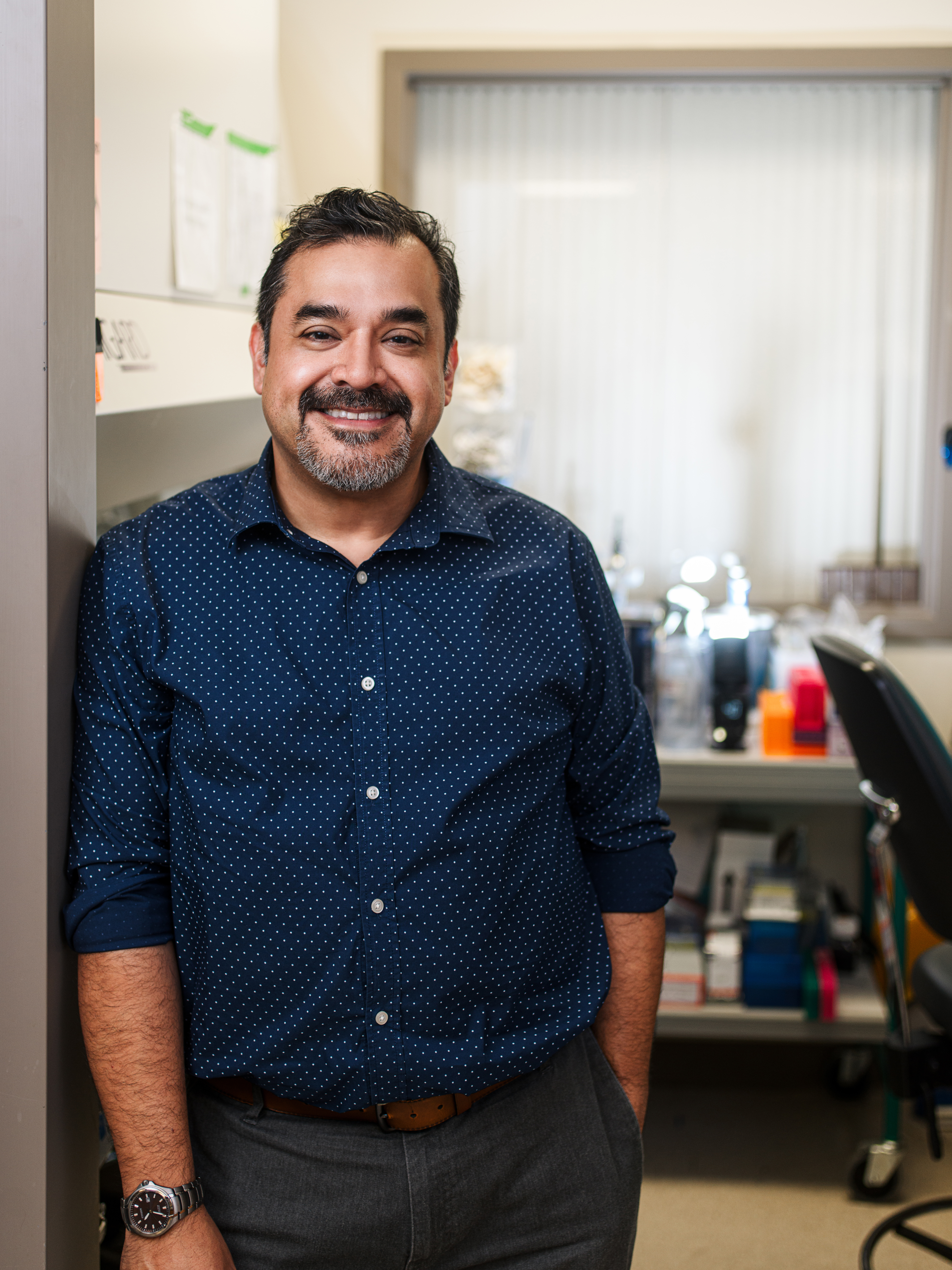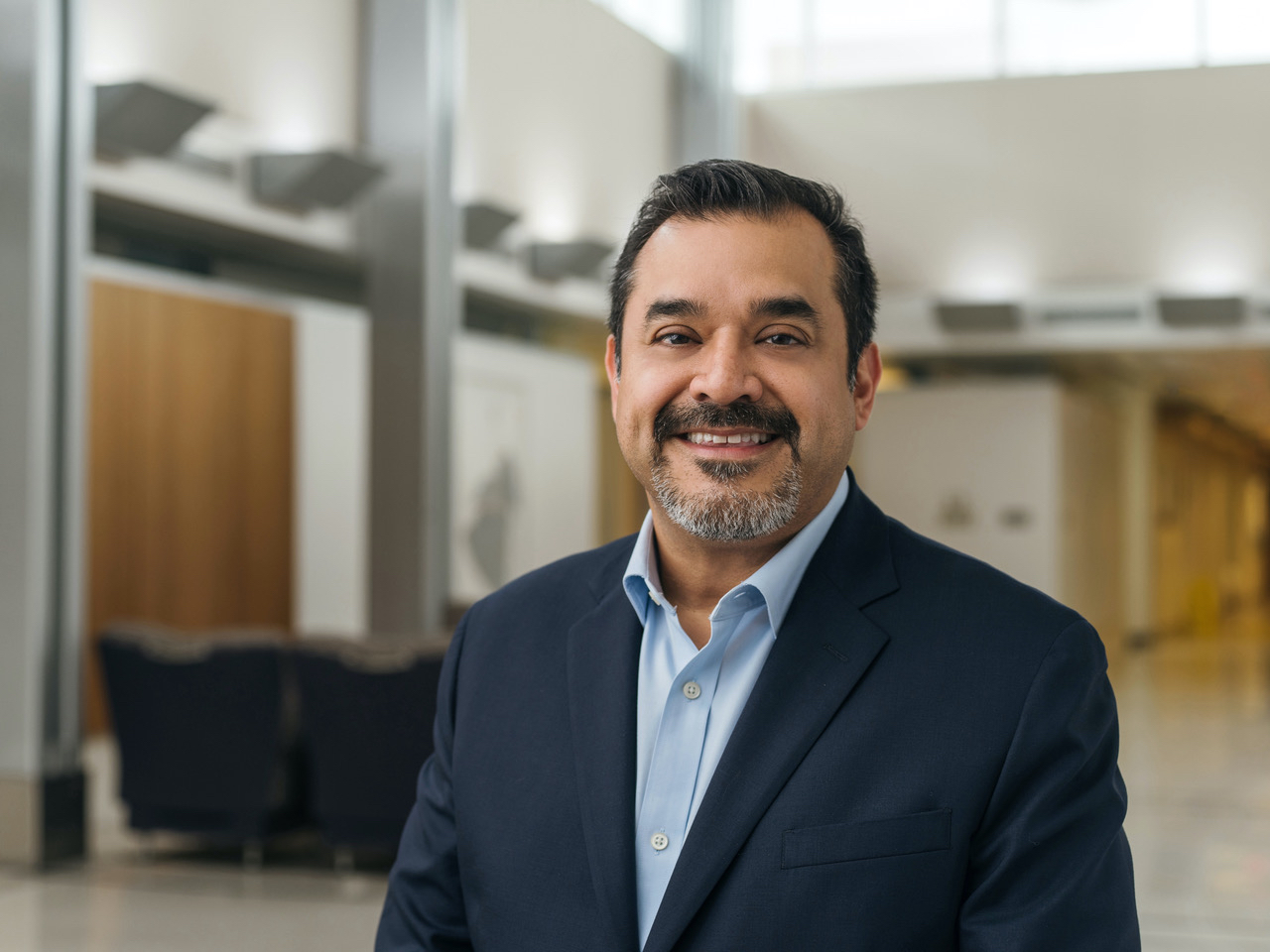Director named for the Wisconsin National Primate Research Center
 The University of Wisconsin-Madison has named Ricardo Carrion Jr., director of Maximum Containment Contract Research and chair of the Animal Use and Care Committee (IACUC) at the Texas Biomedical Research Institute, as the next director of the Wisconsin National Primate Research Center.
The University of Wisconsin-Madison has named Ricardo Carrion Jr., director of Maximum Containment Contract Research and chair of the Animal Use and Care Committee (IACUC) at the Texas Biomedical Research Institute, as the next director of the Wisconsin National Primate Research Center.
Carrion starts in his new role on Nov. 3, 2025.
Carrion received a doctoral degree in microbiology and immunology from the University of Texas Health Science Center, San Antonio.
“In our discussions about his vision as director, I was inspired by his commitment to expanding the center’s research capabilities through collaboration and partnerships both on and off campus. Ricardo brings extensive experience in primate research and a proven track record of biomedical leadership, and the expertise needed to effectively manage large research programs,” says Vice Chancellor for Research Dorota Brzezinska. “I am deeply grateful for Saverio “Buddy” Capuano’s leadership as interim director during the search process and look forward to Ricardo now leading the center into the future as we grow our biomedical research portfolio and maintain our strong commitment to humane animal care.”
The WNPRC plays an important role in the UW research enterprise with its dual mission of empowering the delivery of leading-edge scientific discoveries to improve human health and advancing standards of care, health, well-being and conservation for non-human primates. The center is part of the National Primate Research Centers program funded by the National Institutes of Health since 1961.
The WNPRC advances scientific collaboration and discovery, education and training. Nearly all medical advances have depended on research with animals. NIH-funded research has helped advance therapies for people with HIV, COVID-19, kidney disease, glaucoma, developmental disorders, autoimmune diseases, mental illness, polycystic ovary syndrome, infections that threaten healthy pregnancies, and much more. Read more about the center’s world-changing discoveries here.
Q&A with Carrion:
What is your field of research, and how did you get into it?
My research focuses on virology, specifically on developing animal models to understand disease pathogenesis and to evaluate vaccines and therapies. Over the past 20 years, I’ve collaborated with several government and industry partners to develop treatments and vaccines for Ebola, Marburg, Sudan virus, and COVID.
I began working with high-consequence pathogens such as anthrax, Ebola, and tularemia after the events of 9/11, when our nation faced both terrorist and biological attacks. At the time, I was at an institute with a BSL-4 laboratory, one of the few facilities equipped to study these dangerous pathogens. We had to quickly advance our understanding of their pathogenesis while also developing medical countermeasures and expanding infrastructure to support growth of the laboratory. Over time, we built a program that continues to support national and global needs in this critical area, and I’ve remained deeply engaged in work with high consequence pathogens ever since.
What drew you to this position?
The reputation of UW–Madison and the WNPRC as exceptional places to do science was what first drew me in. The work the WNPRC team has accomplished in global infectious disease, energy metabolism and chronic disease, regenerative and reproductive medicine, and neuroscience with non-human primate models is truly impressive. The chance to lead and help grow a program with such a talented and like-minded team was especially appealing. I’m excited and grateful to be part of this team.
What are the qualifications for the position that you would like to highlight?
I bring over two decades of experience leading complex research programs and teams, combining scientific expertise with strong administrative and fiscal management skills. As Director of the Maximum Containment Contract Research Program at Texas Biomed, I oversaw more than 50 staff members and managed a portfolio that generated a significant portion of the institute’s research revenue. My leadership as IACUC Chair and core scientist at the Southwest National Primate Research Center has strengthened my understanding of primate research oversight and ethical standards. I have successfully built large, multidisciplinary teams and created efficient processes that improved productivity, ensured compliance, and attracted sustained diversified external funding exceeding $39 million in 2024 alone.
My scientific background is focused on developing and characterizing animal models for high-consequence pathogens such as Ebola, Marburg, Lassa, Nipah, and SARS-CoV-2. I was among the first to establish the common marmoset as a small nonhuman primate model for BSL-4 pathogens, advancing vaccine and therapeutic development efforts. I have worked closely with partners from government and industry to drive progress in vaccine, antiviral, and diagnostic development. These experiences have shaped a leadership style centered on collaboration, innovation, excellence, and appreciation for the contributions of every team member. I am committed to bringing that approach to the WNPRC, supporting its mission of scientific excellence and positioning it for continued growth and global impact.
 What was your first visit to campus like?
What was your first visit to campus like?
My first visit to campus was amazing. As a football fan, seeing the Badgers everywhere and experiencing the school spirit was invigorating, and the beautiful landscaping made it even more impressive. The visit was a whirlwind with meetings scheduled throughout the day, but I found each one engaging and interesting. The more I interacted with people, the more I knew this was the place for me. I was especially moved by the science, the openness of everyone I spoke with, and the genuinely welcoming spirit of the campus community.
What are some priorities you have for the position – your first six months?
The P51 base grant is up for renewal next year, making the development of a strong and competitive application a top institutional priority. This will require an all-hands effort across teams to ensure success. Concurrently, I will focus on strengthening our organizational foundations through a comprehensive assessment of current research efforts, enhanced team alignment, and increased operational readiness.
This foundational work includes a thorough review of ongoing projects across all four core research domains to identify scientific gaps, funding needs, and operational risks. To promote collaboration and improve efficiency, we will implement standardized tracking tools and emphasize cross-disciplinary team alignment. Establishing clear Key Performance Indicators (KPIs) will be essential for measuring progress and ensuring alignment with strategic goals. A crisis readiness framework will also be developed to proactively address funding vulnerabilities, ethical concerns, and emerging disease threats.
Once these foundational elements are in place, we will shift toward strategic growth in research, leadership, funding, and technology. Our funding strategy will target large-scale opportunities from diverse funding sources including NIH/NIA (aging research), NIAID and CEPI (pandemic preparedness), and DoD/NSF (neurotechnology). These coordinated efforts are designed to foster interdisciplinary collaboration, accelerate discovery, and position the organization for long-term impact and sustainability.
Could you share some personal information – family? Hobbies outside of work?
My wife is a registered nurse, and my son is a sophomore in high school, and they are looking forward to the new adventure. We enjoy spending time together as a family, attending high school football games, watching reruns of Seinfeld and spending time with extended family. In Texas, my son and I are part of our church choir, where we play the keyboard and organ. I also enjoy photography and participating in my son’s podcast.
Anything else that you would like to add?
Although I’ve only visited three times, I’ve been genuinely moved by the warm welcome I’ve received from both the university and the broader community. It reminds me a lot of San Antonio, where people are consistently kind, supportive, and community-oriented. I’m also encouraged to be joining a center that clearly values both excellence and teamwork. Those qualities make leadership not only more effective but also far more rewarding.
